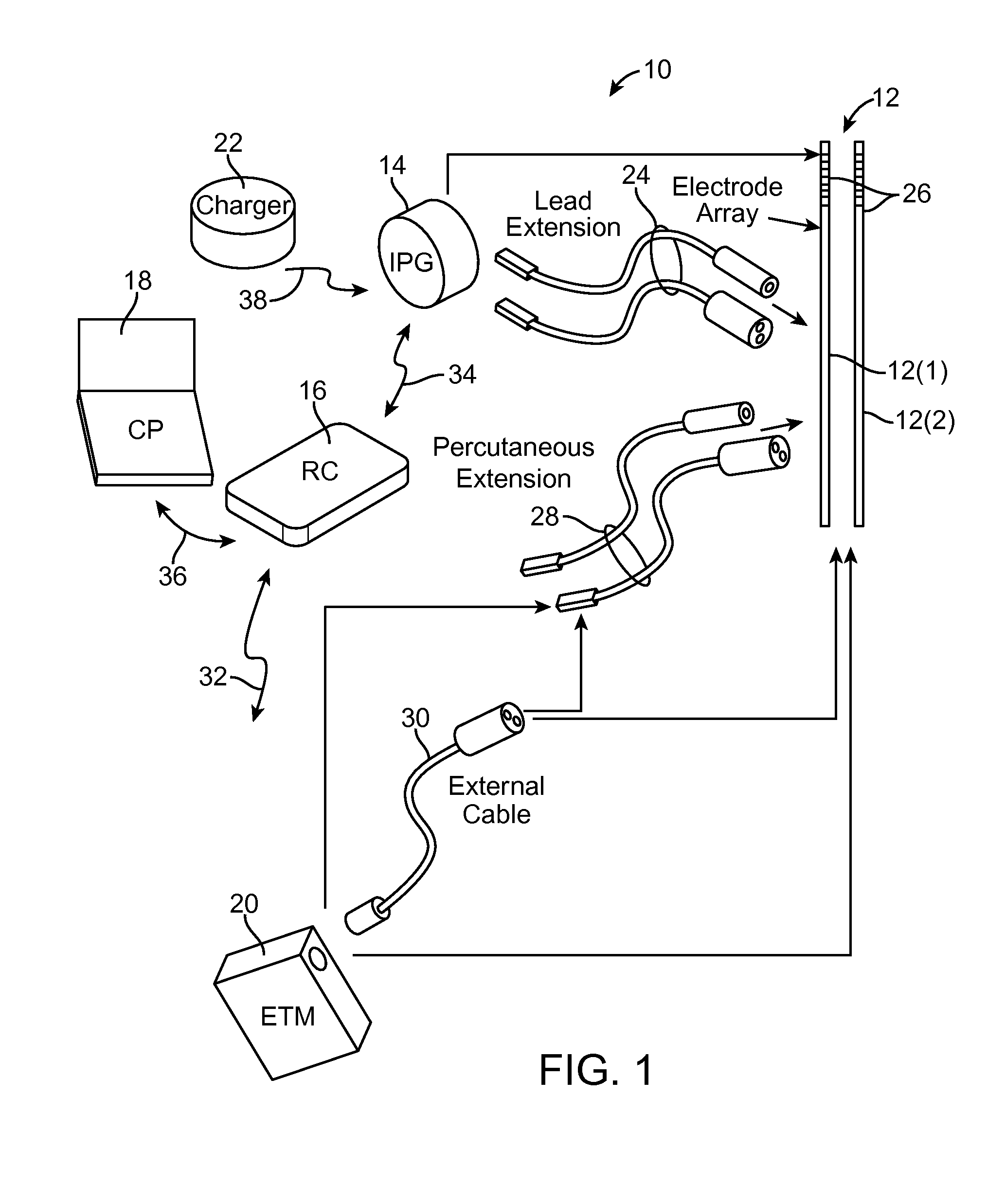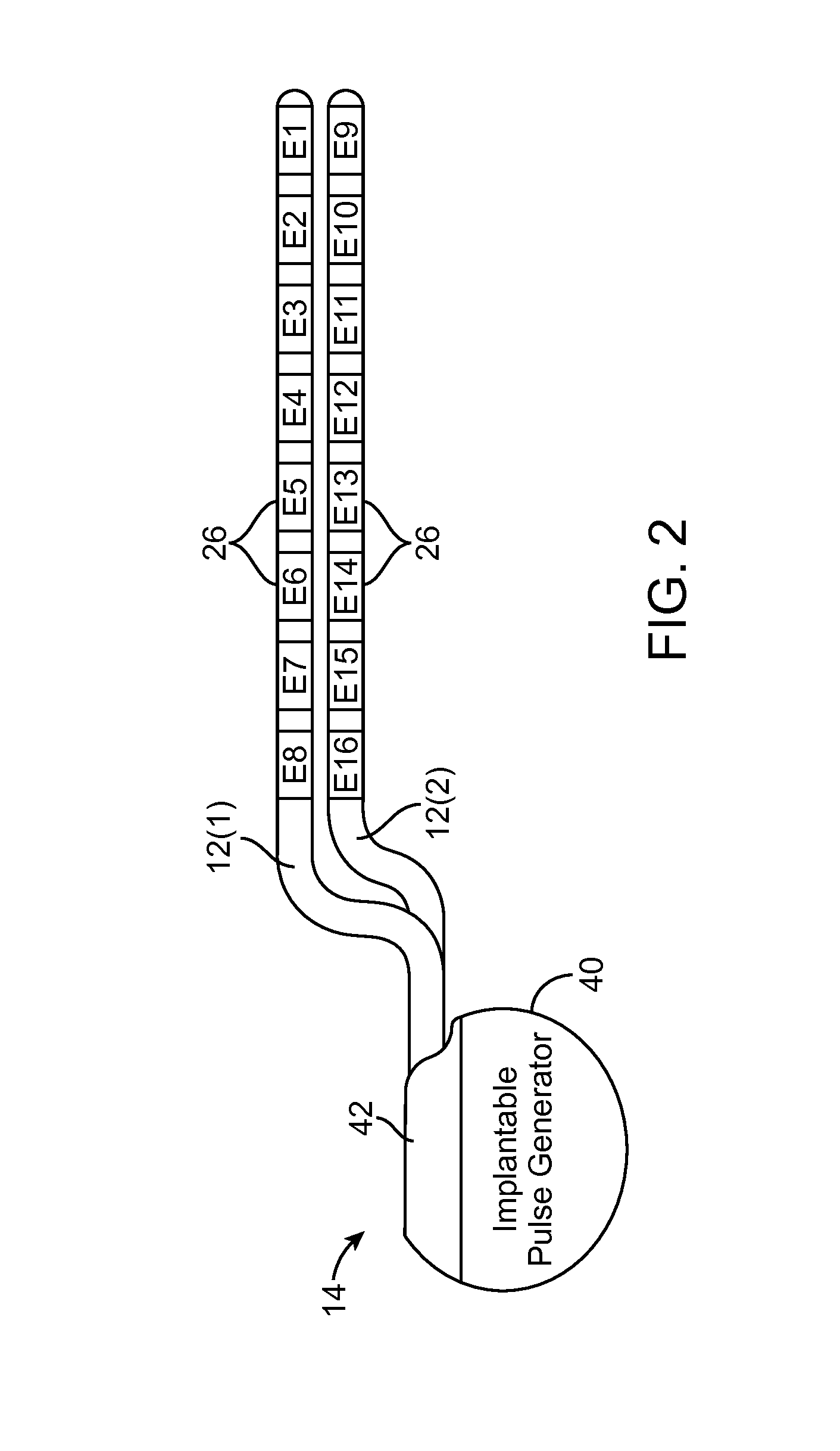Use of compound action potentials to automatically adjust neurostimulation therapy in response to postural changes of patient
a neurostimulation therapy and compound action potential technology, applied in the field of tissue stimulation systems, can solve the problems of over- or under-stimulation of targeted tissue or even stimulation of non-targeted tissue, and achieve the effect of increasing intensity and reducing intensity level
- Summary
- Abstract
- Description
- Claims
- Application Information
AI Technical Summary
Benefits of technology
Problems solved by technology
Method used
Image
Examples
Embodiment Construction
[0025]The description that follows relates to various aspects, embodiments, and / or specific features or sub-components of the present disclosure being provided within a Spinal Cord Stimulation (SCS) system. However, it is to be understood that, while the various aspects, embodiments, and / or specific features or sub-components of the present disclosure lend themselves well to applications in SCS, the present disclosure, in its broadest aspects, is not limited to being used for SCS or in a SCS system. Rather, the various aspects, embodiments, and / or specific features or sub-components of the present disclosure may be used with any type of implantable electrical circuitry used to stimulate any tissue. For example, the present disclosure may be used as part of a pacemaker, a defibrillator, a cochlear stimulator, a retinal stimulator, a stimulator configured to produce coordinated limb movement, a cortical stimulator, a deep brain stimulator, peripheral nerve stimulator, microstimulator,...
PUM
 Login to View More
Login to View More Abstract
Description
Claims
Application Information
 Login to View More
Login to View More - R&D
- Intellectual Property
- Life Sciences
- Materials
- Tech Scout
- Unparalleled Data Quality
- Higher Quality Content
- 60% Fewer Hallucinations
Browse by: Latest US Patents, China's latest patents, Technical Efficacy Thesaurus, Application Domain, Technology Topic, Popular Technical Reports.
© 2025 PatSnap. All rights reserved.Legal|Privacy policy|Modern Slavery Act Transparency Statement|Sitemap|About US| Contact US: help@patsnap.com



